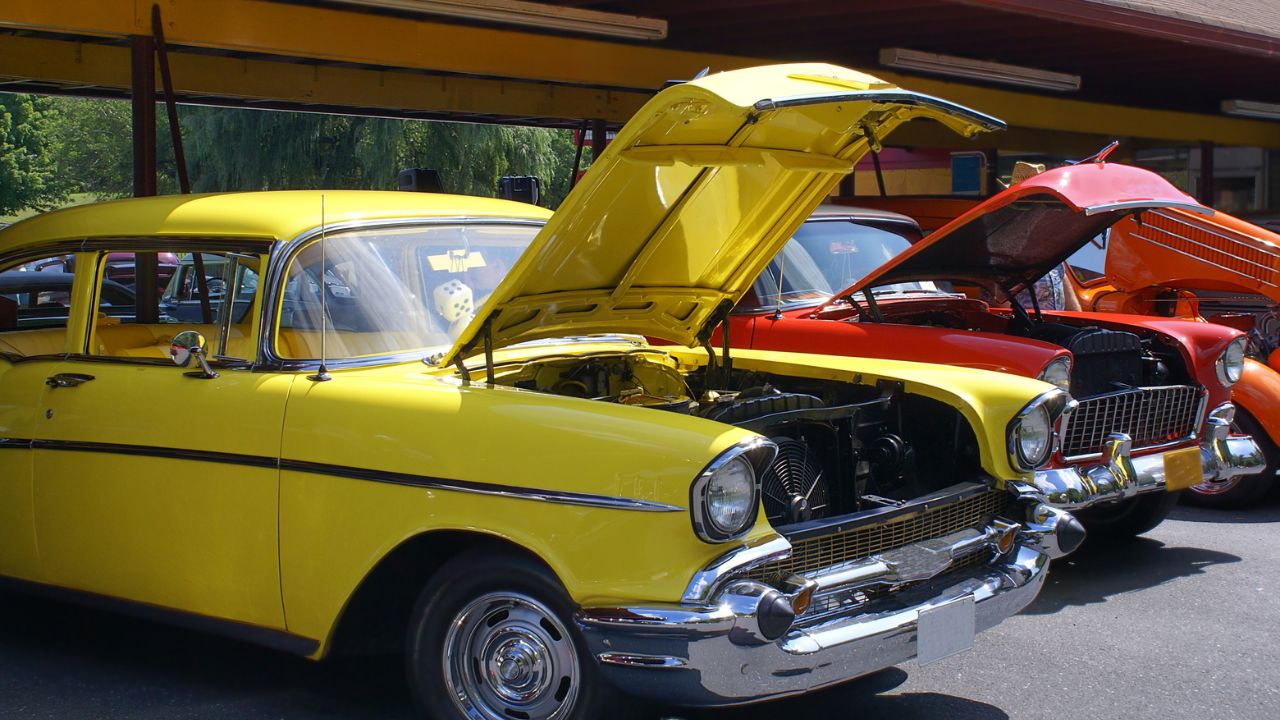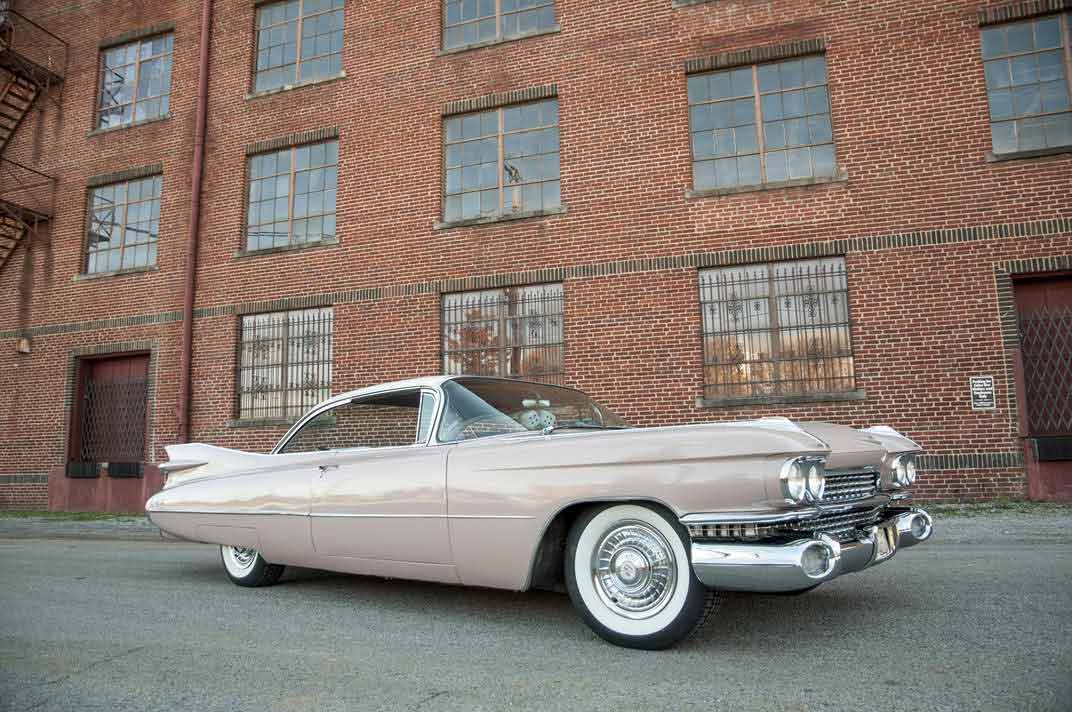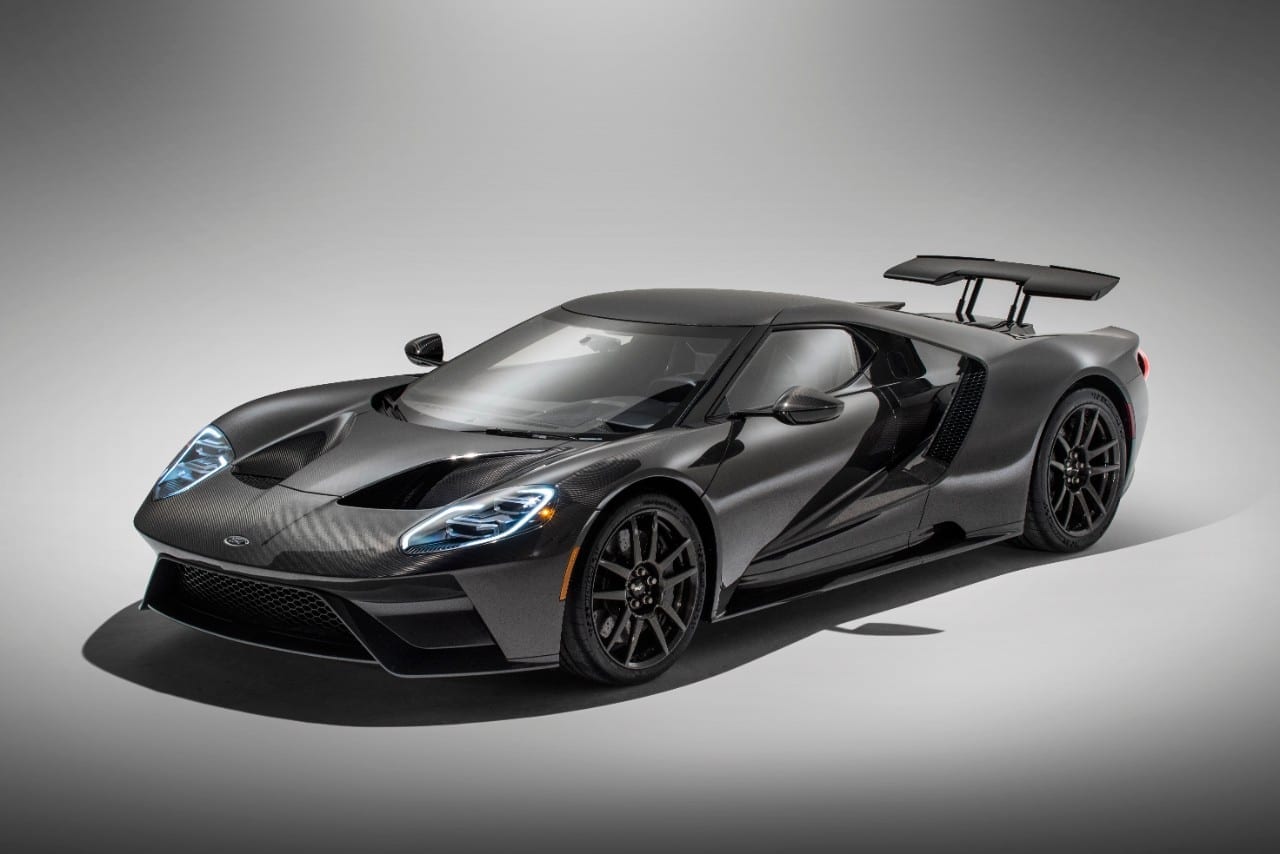
The massive displacement engines provided by Detroit OEM's (previously called The Big Three GM Ford Ford Chrysler) were what fueled the early days of muscle car mania. In the middle of 1960s, there was a Japanese-German invasion. These car manufacturers included Daimler, Volkswagen, and Toyota, while Japanese carmakers included Nissan, Mazda, and Mitsubishi. This invasion led to the creation of the first American muscle cars.
1970 Chevrolet Chevelle SS 454 LS6
The 1970 Chevrolet Chevelle's LS6 is one the finest examples of a muscle car. GM rated LS6 as having 450 horsepower. However, real-world data suggests that it has closer to 500 horses. Regardless of the horsepower rating, the LS6 engine is known for its massive torque curve, which wowed drivers of the day. The torque produced by big-inch motors can shred tires. The Chevelle LS6 was a formidable competitor on the track.
During the horsepower battles of the late 1960s to early 1970s the LS6 engine proved to be the key to defeating the competition. The secret weapon of the 1970 muscle car war was the Chevrolet Chevelle SS454 LS6 engine. The Ford 428 Corvette Jet engine, Chrysler's 440 wedge engine and Dodge 426 Hemi had big engines. However, the LS6 option only was available for one model year, 1970. Buick also sold a 455 cubic-inch (7.46L), engine in 1970.

1970 Plymouth Duster
The performance-oriented, compact 1970 Plymouth Duster was a muscle car that put bigger cars to shame. This compact car boasted a 340 cubic-inch V8 as well as a sporty and powerful hood. Its front end sheetmet and hood scoop were very similar to the Valiant. However, it was distinguished with its cowlback design. Duster models were priced at $2,172 in 1970. The car was also available as a sedan or two-door coupe.
The Plymouth Valiant's flagship model, the duster, was its flagship. It was launched in 1970, and it was sold for seven consecutive years. The 340 cubic-inch V-8, which produced 275 horsepower, was the most powerful. Two slant 6es and one 318-cubic in V-8 were budget-friendly options. In 1970, the Plymouth sporty car was the most loved brand. The duster was affordable and buyers loved its performance.
1970 Coronet Super Bee
A 1970 Coronet Super Bee is one of the most iconic cars of all time, with its killer looks and unstoppable power. The Dodge muscle car's stunning looks are not the only thing that makes it stand out. It also boasts an exceptional restoration that has been meticulously done. Future Classics can help you realize your dream of owning one these iconic cars. Our team can help you start the restoration.
This iconic muscle car was part the Scat Pack. The car's nose was completely redesigned and the base price was dropped to $3074. The car's color choices, like Panther Pink and Red, were created to have maximum impact. This was a rare color and only a few cars were painted it. Despite its unique design, sales fell in 1970.

1970 Pontiac Trans Am SD-455
The 1970 Pontiac Trans Am muscle car is one of the most sexiest. This supercharged four cylinder engine produced 290 horsepower (270 PS) and was the first car with such a high compression ratio. Pontiac engineers worked hard to develop this engine in 1972. This engine became the foundation of the SD-455 musclecar. Despite its high compression ratio, it produced only 290 SAE horsepower.
A 16-yearold car enthusiast found a 36K-mile surviving vehicle in the spring 1977. This Trans Am was the first American car with a hood sticker and was subsequently driven by a long list of A-list celebrities. Burt Reynolds was the most well-known owner of a Trans Am, and he drove it on numerous movie sets. It's easy to see why the car is known as the "Screaming Chicken".
FAQ
What are the basics of car mechanics?
To work as an auto technician, you don’t need to know much about cars. You only need to know how to fix them. Most people begin by changing brake pads and tires, before moving on to more complicated repairs.
You'll need to know how to read diagrams, understand written instructions and follow basic rules of good practice. It is also important to know how to determine if parts are damaged or need to be replaced.
It's important to remember that you shouldn't attempt to repair vehicles without having received proper training and guidance. This is especially true if your job involves expensive parts like transmissions or engines.
In fact, even though you won't need to know much about cars, you will need to thoroughly know the basics of mechanical engineering and physics. This involves understanding how engines work and how brakes work.
Noting that all situations are possible, it is important to be prepared. You might be required to work on a vehicle that was involved in an accident. Additionally, you will need to have experience with handling accidents and breakdowns.
You must also be willing to learn quickly. As well as being able to diagnose problems, you'll need to be able to perform simple maintenance tasks such as tightening nuts and bolts.
How do I prepare for a mechanic apprenticeship?
It is important that you understand the ramifications of your actions. You should be familiar with the mechanics of cars, and how they work. You will be able to know exactly where to begin when you arrive at the garage for your first day.
It is also important to be able to fix small problems like broken lights or tires.
These lessons will help you to identify and fix problems.
To put the pieces back together, you will also need to understand how they fit together.
Finally, you should be able use tools safely.
All these things will help you to become a competent mechanic.
What is the length of an automotive training course?
An automotive course lasts for three years.
The first year is dedicated to theory and learning about cars. The second year is spent on practical training where you learn how to drive, fix engines, and do other mechanical jobs around the car. You will spend the final year working in a local garage to gain real-world experience.
What are the different types of jobs available in car mechanic?
Car mechanics can find work in three areas:
-
Automotive repair shops
-
Dealerships
-
Independent garages
Automotive repair shops
It's where most people start to think about becoming a mechanic. In fact, it's probably the easiest way to get started. You have two options: work in an existing shop or open your own.
You will need to join a union if you want to work in a shop. After being accepted into the union, the union will provide training.
You'll be ready for work once you have completed the training.
Register with the government if you want to open your garage. You'll need to meet certain standards after you register.
After you register, you will be granted a license for your garage to operate.
You can sell spare parts or do minor repairs with your license. It won't allow you to fix major engine problems.
As well as selling spare parts you will need to offer advice and direction to customers.
Dealership jobs
Most dealerships only employ mechanics who have a specific skill set. They might be able to only fix brakes or replace tires.
However, some dealerships also hire general mechanics who can handle all aspects of car repairs.
These positions may require applicants to complete specific training before being allowed on the job. This allows employers to select the most qualified candidates for their roles.
Some dealerships even recruit graduates straight from university. These graduates already have a basic understanding of mechanical engineering, so they are able to learn all about cars.
Independent garages
Independent garages are not associated with any one dealership. Instead, they tend to focus on providing high-quality service.
Independent garages have the ability to afford higher wages, as they aren’t associated with any one company. This means that these jobs are usually more lucrative than those at dealerships.
Independent garages can be just as good places to work, but this does not mean they are better. Many business owners prefer to manage their own businesses rather than delegating responsibility to others.
So you may find yourself working long hours without having any say over what happens during the day.
It is also possible to expect lower wages than you would if working at a dealer.
The good news? You can easily switch between different types of jobs. If you want to work at a dealership, then you simply need to ask your current employer if he would consider hiring you as a mechanic instead.
Or, if your dream is to work for an independent garage you can contact the owner directly.
Finding a new job is not always easy. Many other factors can also influence the amount you earn.
It could be the type and cost of labor you use to repair your vehicle.
Does it matter where I go to college?
Not really. In terms of getting into the auto industry, there is no distinction between colleges. Some schools have better programs than others, so you might want to look elsewhere if your goal is something more specialized.
Statistics
- According to the BLS, the median annual salary for automotive service technicians and mechanics in the United States was $44,050 in May 2020. (uti.edu)
- 52% of Mechanics in the United States think their salaries are enough for the cost of living in their area. (indeed.com)
- According to the BLS, total auto technician employment is expected to exceed 705,000 by 2030. (uti.edu)
External Links
How To
How to start a business plan in a car shop
Before you can start any business, you must have a good idea of what it takes. The first step is to make sure that you understand what type of business to get into. Start your business in a small, isolated town. If things don't go according to plan, you won’t have to look hard for another job. You will want to locate your auto repair shop near large populations if you plan to open it. Your customers will be able to come to see you when they have problems, and you'll be able to sell them new parts at low prices.
If you are just starting out, it might be worth considering opening a franchise. Franchises typically require less capital than traditional businesses. However, you still have to pay royalties and fees to the franchisor every month. Be careful when you choose a franchise. There are some scams. Many promise huge returns, but they fail to live up to their promises.
You could start your own auto shop if you have previous retail experience. Many people who started their own business say that it was one they've made the best decision. You still need to make a business plan prior to you can start. It is important to write down every goal you wish your business to achieve. For example, you might include goals such as increasing sales, improving customer service, and lowering costs. These goals are important to set and can be used as a guideline for how you will achieve them.
You may be interested in opening an auto shop. Next, you will need to find out how to finance it. To finance their business, most people borrow money from banks or credit unions. Banks often require collateral. This means that you need something of value to provide security. You can even get loans for your home. To be approved for a loan, it is necessary to prove that you have enough cash flow in order to repay the loan.
Once your business has been funded, you will need a license. There are several types you can choose from depending on the business type you have. Auto mechanics need to be licensed by the state, while body shops require a federal license.
You don't need to create a marketing plan. Before you can start advertising, it is important to define what your company stands behind. What makes your business different from other companies? How can you build on what others have done in your industry? These questions are essential to creating a strong brand personality. This information will help you design more effective advertisements.